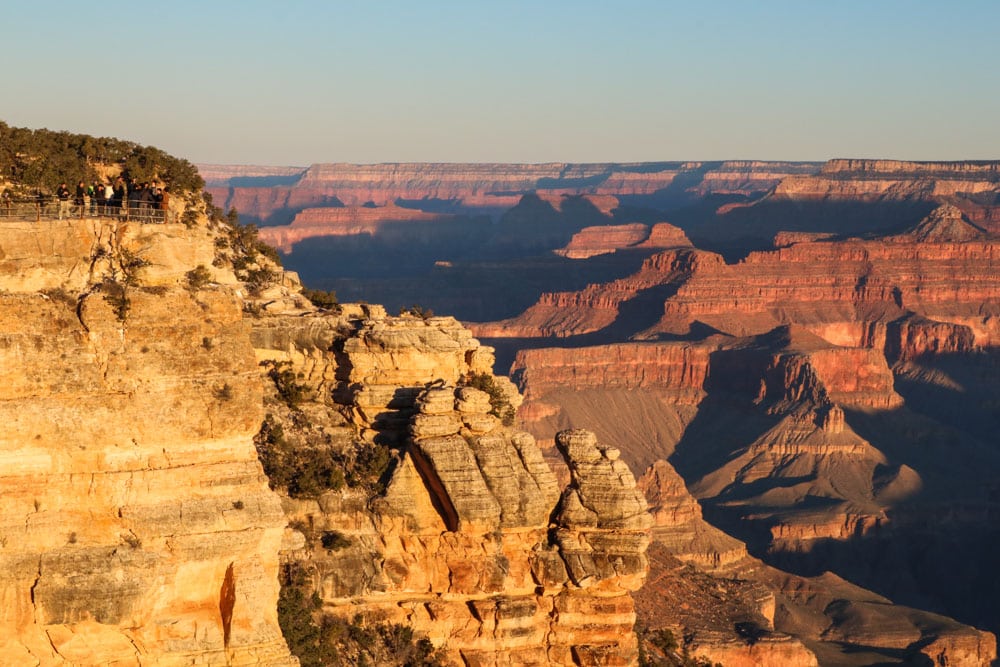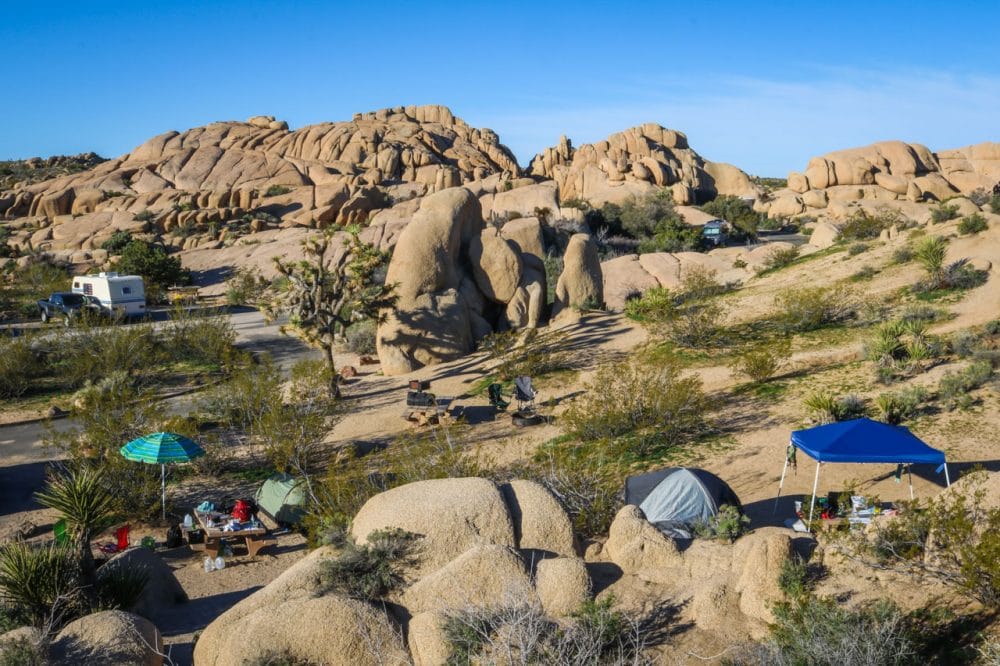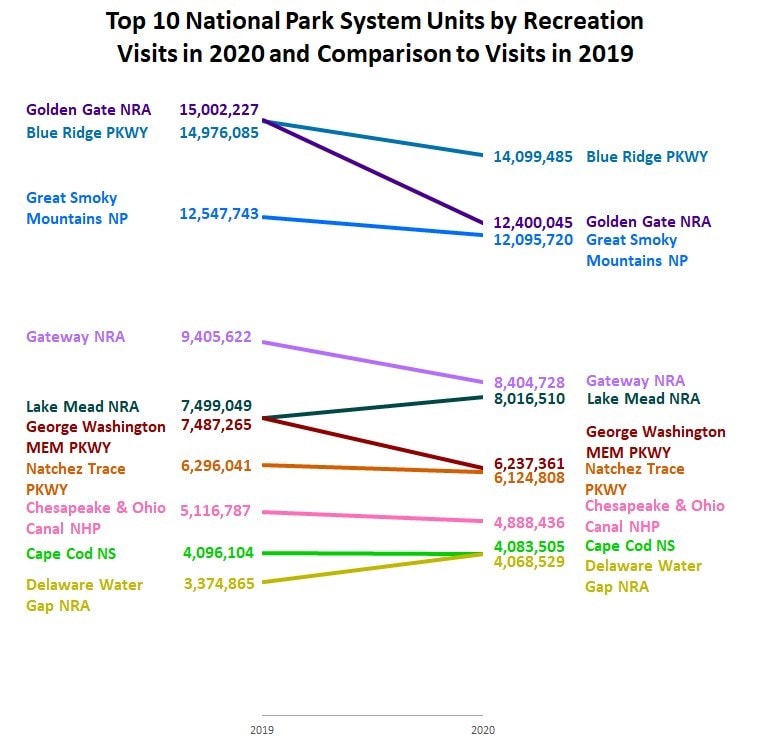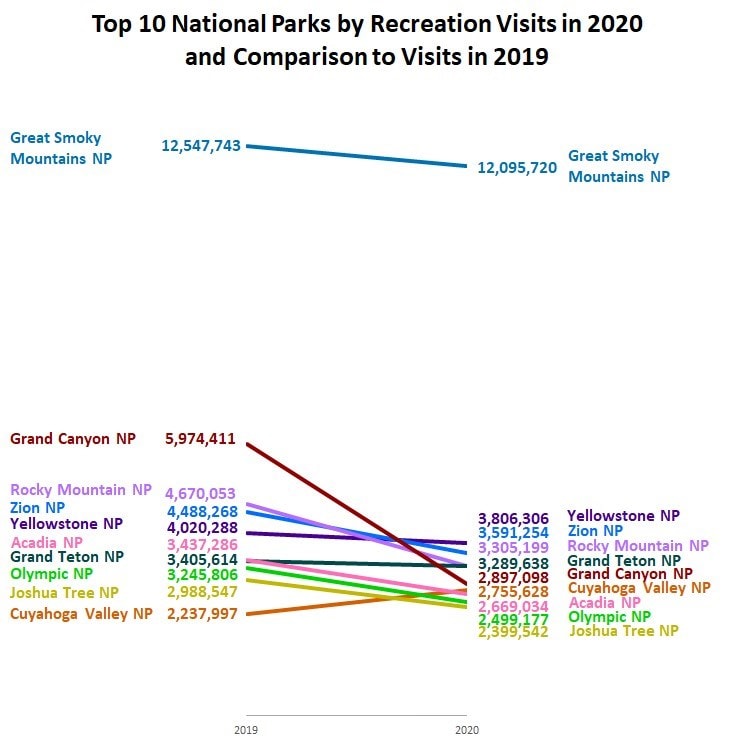It probably isn’t a huge surprise that the U.S. National Park Service (NPS) system, as a whole, saw a significant decrease in visitation numbers in 2020. With a devastating pandemic that caused closures all over the country, starting in the spring and in many places continuing to this day, the national parks also experienced a huge dip in visitor activity.
Yet, as reported by the National Park Service, there were a number of parks that still managed to set individual (seasonal) visitation records in 2020. This, too, as contradictory as it may seem, is not surprising.
As numerous businesses, recreation facilities, sports and music venues, and other indoor spaces closed, many people sought refuge in the great outdoors, especially in national parks. Trails, overlooks and other open spaces provided—and continue to provide—a safe place to get some fresh air, stay active and recreate responsibly.
“This past year has reminded us how important national parks and public lands are to overall wellbeing. Throughout the country, national parks provided close-to-home opportunities for people to spend much needed time outdoors for their physical and psychological health.”
NPS Deputy Director Shawn Benge

237 Million People Visited the National Parks in 2020
In 2020, 237 million people visited America’s national parks, which is more than 90 million fewer visits than in 2019 (a 28% decrease). National park visitation in 2020 was the lowest since 1980. Keep in mind that there were “only” 325 parks in the entire system in 1980, compared to 423 parks in 2020.
The main reason for this drop are the temporary COVID-19-related spring closures of almost all parks, as well as other travel restrictions and lockdowns throughout the year.
However, when they re-opened after the spring closures, many of the biggest and most famous parks saw a spike in visitor numbers in certain periods. National parks all over the country welcomed new visitors in summer and fall, including many first-time national park visitors.
Moreover, this trend is expected to continue this year as well. Joshua Tree National Park, for example, anticipates this upcoming spring to be extremely busy. It is, of course, much to early to tell, but 2021 may well become a record-setting year in the national parks.
Recreate responsibly and follow the Leave No Trace principles.
The coronavirus pandemic, which continues to blaze its way through society, has affected essentially all NPS operations. No fewer than 66 of the total of 423 units in the park system were closed entirely for at least two months in 2020.
The majority of parks, however, remained partially accessible to visitors, mainly those with wide open spaces. On the other hand, up until now, a handful of cultural and historical parks with limited indoor space are still closed.
The National Park Service continues to work with local, regional and national public health officials. Together, they discuss proper regulations and guidelines to deal with ever-changing conditions. A major new policy in all national parks is the mandatory mask requirement in places where social distancing isn’t possible. This includes busy overlooks, trails and parking lots, as well as inside all national park buildings.

2020 National Park Visitation Statistics
In addition to the overall national park visitation number in 2020, the National Park Service also released a bunch of other stats related to recreation in national parks.
Below is a selection of the most interesting numbers. You can find an overview of many more annual national park visitation highlights on the NPS Social Science website and on NPS Stats.
- There were 237,064,332 recreational visits in national parks in 2020.
- Recreational visit hours dropped from 1.4 billion in 2019 to 1.05 billion in 2020.
- 15 parks set a new visitation record in 2020.
- 3 parks had more than 10 million recreational visits in 2020: Blue Ridge Parkway, Golden Gate National Recreation Area and Great Smoky Mountains National Park.
- 7 parks had more than 5 million recreational visits (down from 11 parks in 2019).
- 60 parks had more than 1 million recreational visits (down from 80 in 2019).
- 25% of all recreational visits were in the top 6 most-visited parks (which represent 1.5% of the entire NPS system).
- Of all major parks, Grand Canyon National Park saw the biggest drop in visitation: from 5,97 million visitors in 2019 to 2.9 million in 2020.
- Great Smoky Mountains National Park remains the most visited national park in America, a positioned it’s managed to keep since 1944.
- Yellowstone National Park moved from the sixth (2019) to the second position (2020) of most visited national parks, a spot it hasn’t held since 1947.
- Yosemite National Park also saw a large decrease in visitor numbers—from 4.4 million in 2019 to 2.3 million in 2020—which is the lowest number of annual visits to Yosemite in over 45 years. This caused a drop in the ranking, from 5th place in 2019 to 12th place in 2020.
What Are the Most Visited National Park Service Units?
These were the top ten most visited units in the National Park Service system in 2020:
- Blue Ridge Parkway – 14.1 million
- Golden Gate National Recreation Area – 12.4 million
- Great Smoky Mountains National Park – 12.1 million
- Gateway National Recreation Area – 8.4 million
- Lake Mead National Recreation Area – 8 million
- George Washington Memorial Parkway – 6.2 million
- Natchez Trace Parkway – 6.1 million
- Chesapeake and Ohio Canal National Historical Park – 4.9 million
- Cape Cod National Seashore – 4.1 million
- Delaware Water Gap National Recreation Area – 4.1 million

Credit: U.S. National Park Service
What Are the Most Visited National Parks?
These were the top ten most visited national parks in 2020:
- Great Smoky Mountains National Park – 12.1 million
- Yellowstone National Park – 3.8 million
- Zion National Park – 3.6 million
- Rocky Mountain National Park – 3.3 million
- Grand Teton National Park – 3.3 million
- Grand Canyon National Park – 2.9 million
- Cuyahoga Valley National Park – 2.8 million
- Acadia National Park – 2.7 million
- Olympic National Park – 2.5 million
- Joshua Tree National Park – 2.4 million

Credit: U.S. National Park Service
